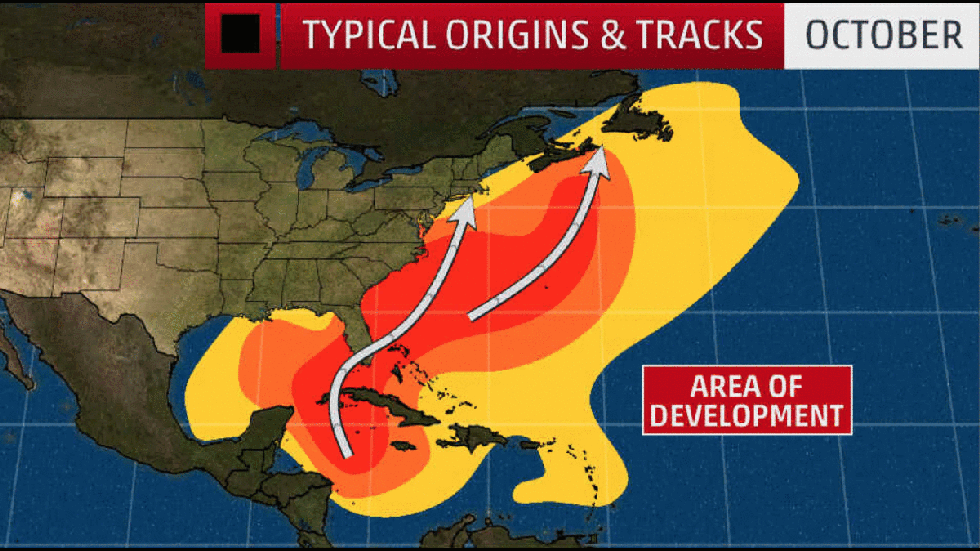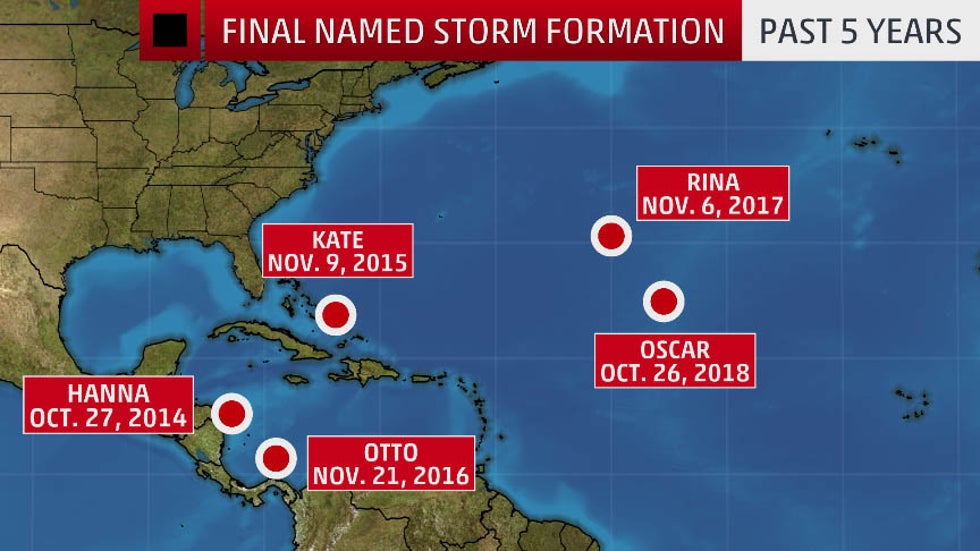
The Atlantic hurricane season is starting to wind down as we approach the official end of the six-month season on Nov. 30. We can’t count on total tranquility, though, as past Novembers have produced some vicious hurricanes.
The last three weeks of October were exceptionally active, producing one hurricane (Pablo), three tropical storms (Melissa, Nestor and Olga), a subtropical storm (Rebekah) and Tropical Depression Fifteen. All formed between Oct. 11 and 30.
Pablo became a hurricane on Oct. 27 between the Azores and mainland Europe, farther east than any of the hundreds of hurricanes in Atlantic records dating back to 1851.
The Atlantic has averaged two hurricane formations after Oct. 7 (1966-2009 average), according to the National Hurricane Center, so in a typical year, we might expect one more hurricane before the season is done.
According to Phil Klotzbach of Colorado State University, 2019 joins six other years that had at least 17 named storms by the end of October: 1933, 1995, 2005, 2010, 2011 and 2012.
The total number of hurricanes (6) and major hurricanes (3) so far this year is close to average, while the amount of accumulated cyclone energy is about 25% above average, according to CSU.
What November Can Bring
Since 1950, there have been 38 named Atlantic Basin storms in November; 21 became hurricanes. Based on this history, expect one named storm every other November, and one November hurricane roughly every three years.
The latest time a major hurricane (Category 3 or stronger) made landfall in the United States was the 1925 Tampa Bay hurricane on Oct. 25.
Hurricane Kate in 1985 was the latest-in-season hurricane landfall in the U.S. Kate came ashore at Mexico Beach, Florida, on Nov. 21, a week before Thanksgiving.

Many of November’s tropical storms and hurricanes develop in the Caribbean. Strong upper-level winds can extend well into the subtropics by that point, hindering development in the Gulf of Mexico and northwestern Atlantic.
The first few cold fronts of the autumn often make it into the Gulf of Mexico but stop there, leaving the Caribbean waters warm enough to support tropical cyclone development.
The last named storm to develop in the Atlantic Basin in November was a strong one: Category 3 Hurricane Otto (2016). Otto first formed on Nov. 20 in the far southwestern Caribbean Sea. After meandering nearly in place, Otto rapidly gained strength as a hurricane on Nov. 23.
After reaching peak intensity, Otto made landfall in deep southern Nicaragua, a dozen miles north of the Costa Rica border, during America's Thanksgiving holiday.
Otto was the latest-in-season Atlantic Basin hurricane landfall, as well as the farthest south.
The Weather Company’s primary journalistic mission is to report on breaking weather news, the environment and the importance of science to our lives. This story does not necessarily represent the position of our parent company, IBM.

No comments:
Post a Comment